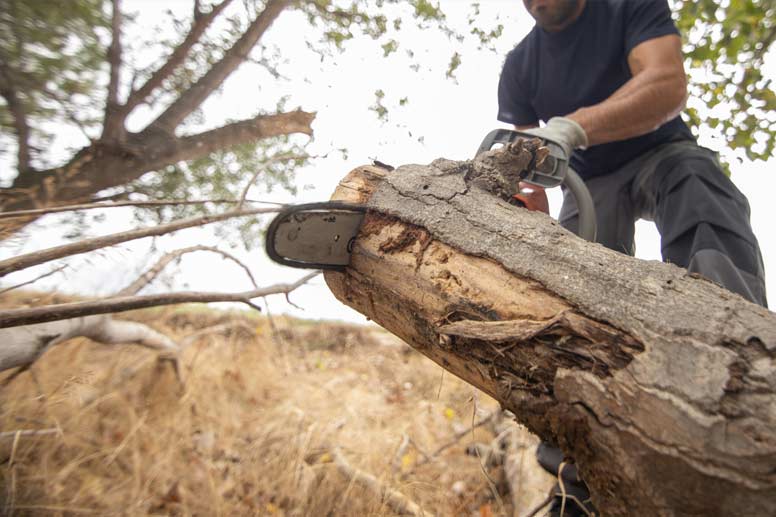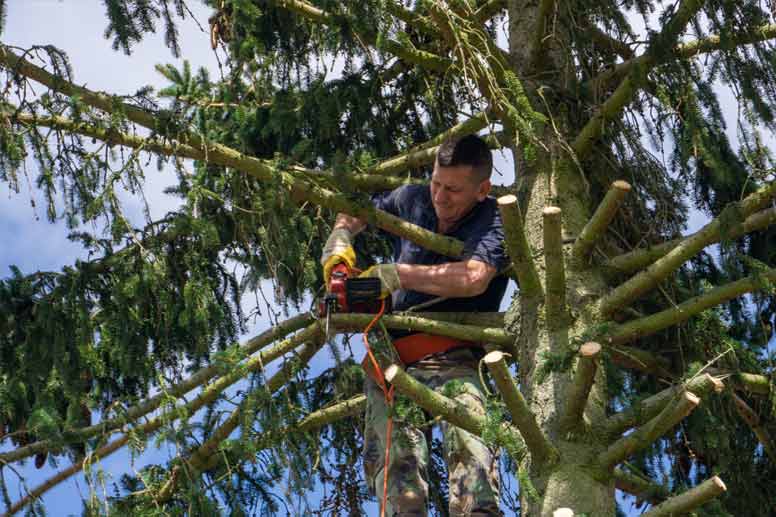How to Start a Tree Removal Service Business in the U.S.?

Table of Contents
- 1. Research the Market and Define Your Tree Removal Services
- 2. Write a Detailed Tree Removal Service Business Plan
- 3. Obtain Licenses and Insurance
- 4. Invest in the Right Equipment
- 5. Build and Train Your Team
- 6. Set Competitive Pricing
- 7. Market Your Tree Removal Services
- 8. Optimize Operations with Software
- 9. Launch Your Tree Removal Service Business
- Starting A Tree Removal Service Business FAQs
Professional tree removal services in the United States continue to see steady demand. This is mainly driven by property maintenance and storm-related damage. So, what exactly do you need to know about how to start a tree removal business.
The market for tree services is projected to grow significantly in the coming years. Reports indicate an annual growth rate of 14.3% in 2025. This makes now an excellent time to start your own business.
Let’s walk you through all the main points.
1. Research the Market and Define Your Tree Removal Services
Understanding the market is your first step. Research local demand, competition, and customer needs to shape your offerings.
Key Services to Consider:
- Tree Removal: Safely removing hazardous or unwanted trees.
- Tree Maintenance: Focusing on tree health and staying well-maintained.
- Tree Stump Grinding/Removal Services: Grinding or removing stumps left behind.
- Emergency Tree Services: Responding to storm damage or fallen trees quickly.
Pro Tip: Consider offering specialized services. Eco-friendly tree care or professional tree care services are just two niches that could help you stand out.

2. Write a Detailed Tree Removal Service Business Plan
A well-thought-out business plan sets the foundation (or roots) for the success of your business.
Include these components:
- Executive Summary: Define your mission, vision, and objectives.
- Market Research: Assess the demand for tree trimming and removal services in your area.
- Budget and Funding: Outline your startup costs for equipment, marketing, and insurance.
- Pricing Strategy: Research local rates. For example, tree service/removal typically range from $150 to $1,500 depending on the tree’s size and complexity.
A clear business plan guides your operations and outlines your clear goals. Additionally, it can also help secure funding if needed.
3. Obtain Licenses and Insurance
Tree removal is a high-risk industry. Proper licensing and insurance are non-negotiable to protect your business and clients.
Licencing Requirements
Licensing isn’t always required. However, in some states a tree service license or business license is mandatory.
For example, California’s Contractor State License Board needs four years of journeyman-level experience. You must also pass a two-part state exam.
Always check with your local and state agencies for specific requirements.
Insurance
Invest in general liability and worker’s compensation insurance to protect your business and employees.
General liability covers property damage and injuries, while worker’s compensation ensures employees are covered in case of accidents. Costs range from $400 to $1,500 annually, depending on factors like business size, location, and coverage limits.
For instance, high-risk states may see premiums closer to $2,000 annually.
Shop around and compare quotes to find the best coverage for your needs.
Certification
Like licensing, certification isn’t always mandatory. However, earning credentials like the International Society of Arboriculture (ISA) can add to your credibility.

4. Invest in the Right Equipment
So what equipment is needed to start a tree removal business? Start with the essentials:
- Chainsaws: $300–$600 each.
- Stump Grinder: $2,000–$5,000.
- Wood Chipper: $10,000–$20,000.
- Safety Gear: Hard hats, gloves, and harnesses (≈500 per worker).
- Trucks and Trailers: $15,000–$50,000.
If you’re on a tight budget, consider renting equipment to lower initial costs.
Pro Tip: Use Invoice Fly’s Receipt Scanner to track equipment expenses and stay on budget.
5. Build and Train Your Team
Skilled labor is crucial for a tree service company. Whether you’re beginning alone or planning to expand, safety and expertise are top priorities.
- Hiring: Initially, you may handle all tasks yourself, but as demand grows, consider subcontracting or hiring full-time employees.
- Safety Training: Ensure all team members are well-versed in equipment handling, climbing techniques, and emergency response.
Interesting Fact: Tree service professionals face one of the highest workplace injury rates in the United States. Proper safety training is essential.
6. Set Competitive Pricing
Pricing your services correctly is essential for profitability and customer retention. It starts with understanding your costs and market rates to provide quotes that balance value for clients with your business’s financial health.
- Tree Removal: Prices typically range from $300–$1,500, depending on factors like the tree’s size, location, and complexity.
For example, removing a 20-foot tree might cost $500, while a 60-foot tree could exceed $1,200.
- Tree Trimming: Expect to charge approximately $200–$800 per job. Costs vary based on the number of trees, the type of tree, and the level of tree pruning required.
- Tree Stump Removal Services: Rates are generally $100–$400 per stump. This is influenced by the stump’s diameter and whether grinding or complete extraction is needed.
Pro Tip: Use our Estimate Generator to quickly calculate quotes.
Tailor Your Pricing to Stay Competitive
- Account for Local Market Trends: Research competitors in your area. Are they offering discounts for bundling tree trimming and stump removal? Consider if similar offers could attract more customers, for example a free estimate.
- Charge Extra for Unique Challenges: Including jobs with hard-to-access locations, proximity to power lines, or emergency services. This will cover the increased risk and labor.
- Seasonal Adjustments: Tree services are often in higher demand after storms or in spring and fall. Slightly higher rates during peak seasons can offset slower months.

7. Market Your Tree Removal Services
Effective marketing puts your name out there and gets your business noticed.
Some good starting points:
- Website: Create a professional site to showcase services, testimonials, and before-and-after photos.
- Social Media: Use platforms like Facebook and Instagram to share updates and offers.
- Local Listings: Register on Google My Business, Yelp, and local directories.
- Referral Discounts: Offer incentives for referrals to build your client base.
Pro Tip: A strong online presence and customer reviews can make or break your business in today’s digital age. More and more people are using social media as a search engine to find trusted services they need.
8. Optimize Operations with Software
Managing a tree removal business involves juggling estimates, invoices, schedules, and more. The right software can simplify everything.
Benefits of Invoice Fly’s Tree Service Software:
- Create detailed estimates
- Track time and payments
- Generate professional invoices
- Maintain organized records
9. Launch Your Tree Removal Service Business
Now it’s time to get started. Whether you’re trimming small branches or managing large tree removal projects, this is the moment where your planning meets action.
Focus on delivering exceptional service, maintaining safety standards, and building trust with your clients.
Our Invoicing Software for Tree Service Businesses can help you to focus on delivering exceptional service.
You handle the heavy-lifting (literally) and we’ll take care of the behind the scenes, keeping your business organized.
Starting A Tree Removal Service Business FAQs
Starting a tree care company can cost anywhere between $15,000 and $100,000, depending on equipment and training needs. Renting gear or subcontracting for large tree work can help reduce initial expenses.
Essential services include tree pruning, tree trimming, small tree and stump removal, and large tree removal. Offering free estimates and focusing on customer service can help attract more clients.
Yes, you can start solo by focusing on smaller tasks like tree pruning or removing small trees. As demand grows, you can hire staff or subcontract.
Tree service software like Invoice Fly helps streamline customer service and boost overall efficiency. Features include sending invoices, creating estimates, tracking expenses and more.

